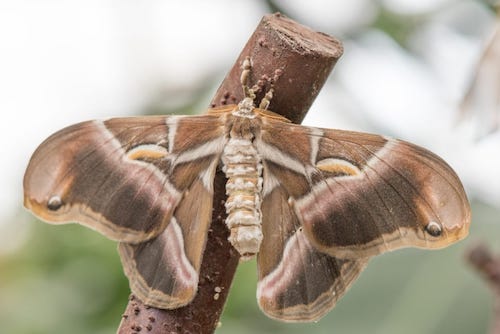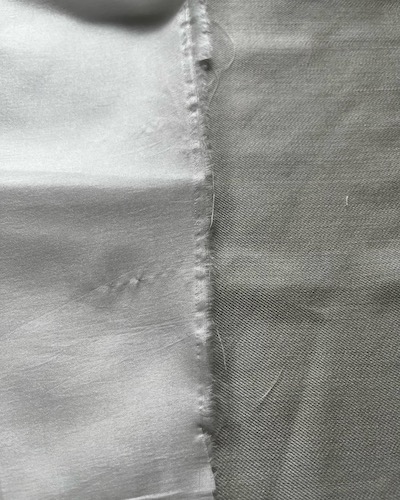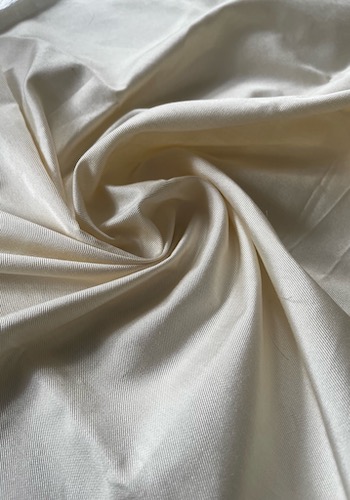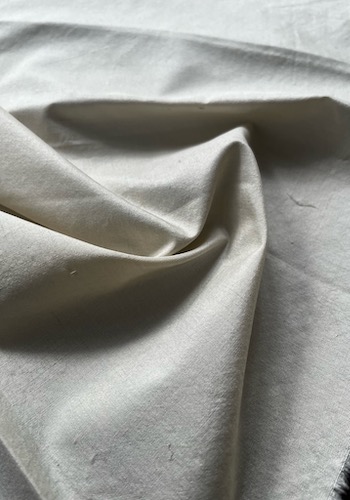What is peace silk?

Peace silk, also known as ahimsa silk or non-violent silk is a type of silk that is made without harming the silkworm. Ahimsa comes from a Sanskrit word meaning non-injury or non-violence. It is a common Hindu and Buddhist doctrine that refrains from harming any living being.
The manufacturing process of silk involves multiple steps starting with rearing the silkworm. If you would like to learn more about the process of making silk, you can read about it in the dupion silk guide.
What are the types of silk yarn?
Before we get into what ahimsa silk or peace silk is and how it is made, let me take you through the different types of yarn that form different varieties of silk. There are predominantly four species of silkworm that are ideal for silk farming. These four species produce four different types of yarn. The most popular silk variety is mulberry silk, followed by tasar silk, eri silk, and muga silk.
How is peace silk manufactured?
The manufacturing of silk is an elaborate process. However, for the purpose of this blog, I will take you through a quick summary of the process. It begins with rearing the silkworm, forming the cocoon, boiling the cocoon, and reeling the silk thread.
When the silkworm is ready to transform into a pupa, it begins secreting a fluid using a special salivary gland. This secretion solidifies when it comes in contact with the air. This secretion forms the silk threads. These threads are later reeled by hand or machine to form a yarn thick enough to be used. This yarn is weaved to form the peace silk materials.
How is peace silk different from traditional silk?
The harvesting of the silk yarn begins about 24 days after forming the cocoon. The cocoon is boiled in hot water to soften it and make it easier to reel the threads. Traditionally the cocoon is boiled in hot water while the silkworm is still inside, thus killing it. With ethical processes rightly becoming more of a priority today, farmers and scientists have developed peace silk or Ahimsa silk.
In ahimsa silk, the silkworm is allowed to complete its metamorphosis into a moth and escape the cocoon before the yarn is processed.

Why is peace silk not yet as popular as regular silk?
When the silkworm transforms into the moth and escapes, it secretes a yellow fluid. This fluid enables the cocoon to open for the moth to escape. This yellow liquid leaves a stain on the silk yarn and hardens it. This results in the manufacturing of silk that does not have the same luster as regular silk.
Peace silk is also more expensive since it is more labor-intensive and time-consuming than processing regular silk. When I use the term regular silk, I am referring to silk manufactured in the traditional method that involves boiling the cocoon with the silkworm inside. Since peace silk has a lower degree of luster and has a higher price point it isn’t the most popular choice among buyers. Let’s hope future buyers are attracted to peace silk!

A comparison of the luster in traditional silk (left) and peace silk (right)
Explore our wide variety of silk fabrics now!
What are the types of peace silk?
There are two types of ahimsa silk; mulberry peace silk and eri silk. Each of these silks originates from different species of silkworms. The mulberry silk comes from the Bombyx Mori L silkworm. This silkworm mainly feeds on mulberry leaves hence the name mulberry silk. Eri silk comes from the Philosamia Ricini which feeds mainly on castor leaves. Both varieties allow for the moth to escape before the yarn is harvested.
When it comes to peace silk, the eri silk variety is easily available however, it lacks luster and does not have the sheen that silk is adored for. Mulberry peace silk has a higher degree of luster than Eri silk, although its luster is no match to silk produced in the traditional way. The production of mulberry silk in a non-violent method is not as common as that of Eri silk.
Which peace silk should one opt for?
Well, that would largely depend on what you are looking for. The only difference between the two types of peace silk is its luster and the price. Depending on your priorities you can choose what is best for you. Mulberry peace silk is harder to come by but has a better luster. Eri silk is easier to come by but lacks the luster that silk is commonly known for.

Mulberry peace silk

Eri peace silk
What are the characteristics of peace silk?
Peace silk is a natural fiber textile that has many properties. We have listed a few properties here.
Soft on the skin
Silk has been known to have a soft and tender texture making it a preferred option for furnishings and garments.
Durable
Silk yarn, although very fine, is extremely durable. It is in fact one of the strongest natural fibers available.
Thermoregulating
It has a natural ability to temper body heat. That is why it keeps you warm during winter and cool during summer.
Breathable
Being a natural fiber it is breathable and is preferred over synthetic fabrics.
Lightweight
Silk is fine, delicate, and lightweight, making it an excellent choice for garments.
Hypoallergenic
Silk is one of the most hypoallergenic fabrics available. Since its origins are designed to be a protective layer, it repels dust mites and resists bacteria and mold. It is also non-abrasive hence making it a great option for furnishings.
How should you care for peace silk?
Peace silk is as delicate as regular silk. So the same care instructions for silk apply to peace silk.
Cleaning
Dry-cleaning silk is the ideal way to care for this delicate fabric. It helps preserve the fabric’s texture, color, and luster. However, if you need to hand wash the fabric, use cold water and a mild detergent, and avoid wringing or twisting the fabric to prevent damage.
Ironing
When ironing silk, use a low heat setting and place a clean, damp cloth between the iron and the fabric. This method will help prevent scorching and maintain the fabric’s smoothness and luster.
Storage
Store your silk garments and furnishings in a cool, dry place, away from direct sunlight. While storing, use a breathable garment bag or cover the garment with thin paper to protect the fabric from dust and moisture.
How can one purchase authentic peace silk?
I am biased here, but you can reach out to us for your peace silk requirements! We cater to countries all across the globe, so it would not matter where you are situated.
If that’s not the answer you are looking for, then you can find a local vendor who claims to have peace silk. But remember to get it tested!
How can one purchase authentic peace silk?
Well let me be honest, there is no easy way to do this. Firstly, you need to ensure the fabric you are purchasing is silk indeed. We have seen multiple cases where a client or a well-wisher claims to own a product that is supposed to be made from silk. However, it isn’t! Art silk or artificial silk is easily available in the market and looks very much like real silk. So the first thing you need to do is get your silk tested. You can send a sample to a lab. They will be able to tell you the authenticity and the variety of silk.
Once you have established that it is indeed silk, the next thing you do is ensure that the manufacturing process follows non-violent norms. This is harder than the first step. Your best option would be to visit the silk farm and see their manufacturing process. This is the best way available as of today, as there are no available certifications to authenticate the manufacturing process.
Why should one opt for peace silk?
Peace silk is an ethical alternative to traditional silk. Since the process of making peace silk ensures that there is no harm done to the silkworm or the moth, it makes a guilt-free option to enjoy the benefits of silk.
Where can peace silk be used?
Peace silk is similar to traditional silk except for its matte finish. Hence it makes a great option for garments and furnishings. Silk is known to be a luxury fabric for garments and furnishings for centuries and that doesn’t have to change now that we have an ethical alternative to silk!

